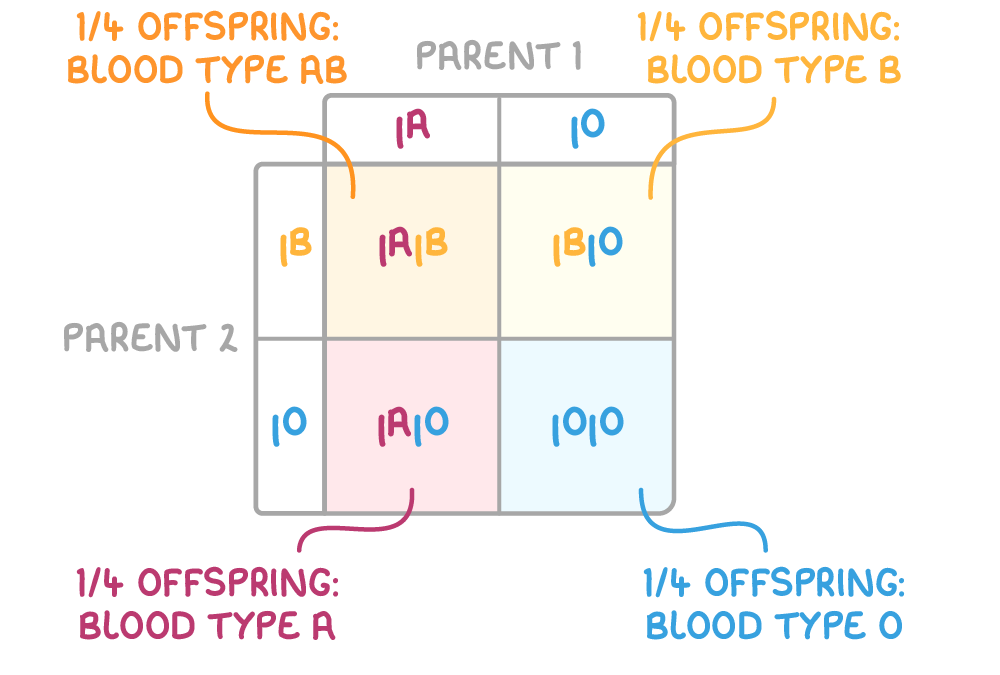Multiple Alleles
This lesson covers:
- What multiple alleles are
- The ABO blood group system as an example of multiple alleles
- Inheritance of the ABO blood groups
What are multiple alleles?
Multiple alleles refer to genes that exist in more than two allelic forms. However, an individual can only have two alleles of a specific gene at any one time.
These alleles often encode slightly different versions of the gene's product. The existence of multiple alleles increases the phenotypic diversity among individuals in a population.
The ABO blood groups as an example of multiple alleles
An example of multiple alleles in humans is the ABO blood group system. This system is controlled by a gene known as the immunoglobulin, or I, gene.
In this system, the alleles IA and IB are codominant, as they are both expressed when inherited together. The IO allele is recessive.
The potential blood group phenotypes are determined by the combinations of I gene alleles inherited.
| Genotype | Phenotype | Antigens present |
|---|---|---|
| IAIA or IAIO | Blood type A | A |
| IBIB or IBIO | Blood type B | B |
| IAIB | Blood type AB | A and B |
| IOIO | Blood type O | None |
For instance, a group A parent (IAIO) and a group B parent (IBIO) might produce offspring with any of the ABO phenotypes. Conversely, two group O parents can only have group O children.
Worked example - Identifying offspring phenotypes with multiple alleles
Identify the phenotypic ratio of offspring that can be produced from a heterozygous parent with blood group A (IAIO) and a heterozygous parent with group B (IBIO).
Step 1: State the parents’ gametes
as both parents are heterozygous, they can each produce two different gametes
parent with blood group A can produce gametes IA and IO
parent with blood group B can produce gametes IB and IO
Step 2: Use a Punnett square to identify the potential phenotypes of the offspring

Step 3: Identify the phenotypic ratio of offspring produced by this cross
as there is an equal chance for any of the four potential genotypes to be produced by this cross, any of the four possible phenotypes may be produced
the phenotypic ratio of blood type A : blood type B : blood type AB : blood type O in the offspring is 1:1:1:1